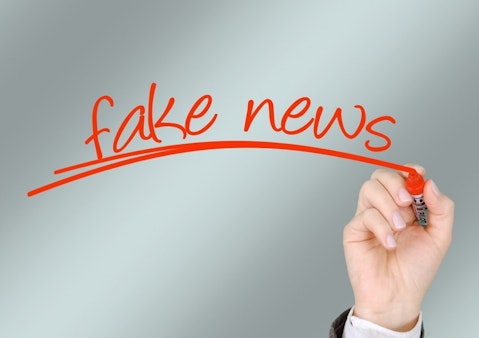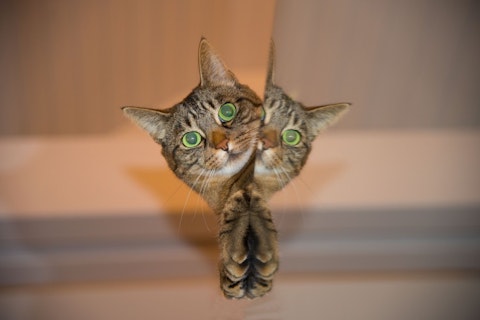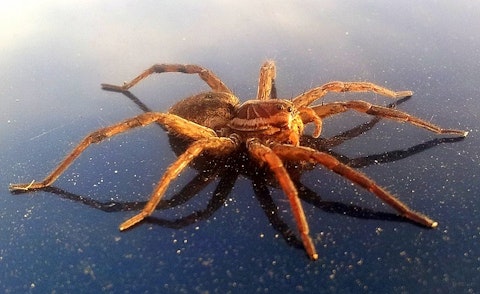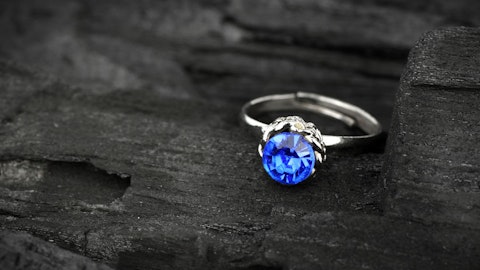To learn more about some of the most believable and widely-spread false stories in recent memory, take a look at our list of the 16 biggest internet hoaxes that fooled the world.
If you are interested in more dishonest internet phenomena, check out our list of 11 countries with most hackers and cyber criminals.
The internet is both a wonderful gift, and an awful curse. While the creation of the internet has done wonders for the spread of information across the globe, bad always comes along with the good, and there will always be someone out to abuse such an easy highway for information. While a light-hearted prank can be funny and entertaining, dissemination of false stories can also have devastating effects.

In order to create our list of biggest internet hoaxes that fooled the world, we took information from BGR, RealityPod, and Mashable to compile the biggest internet hoaxes of all time. We created and sorted our list by the average order in which they were ranked across sites. Not all stories were mentioned across all platforms, and those received a lower ranking than those appearing in every source.
Keep reading to learn more details about the biggest internet hoaxes that fooled the world.
16. The Montauk Monster
The hoax of the Montauk Monster started with a newspaper back in July of 2008 in Montauk, New York. The story began when an unidentifiable dead creature washed up on the beach. Shortly after the story’s release, photos exploded everywhere on the internet. The Montauk Monster was born because no one knew what the creature was, and to this day, after almost ten years, no one has ever figured out what the strange animal was. People have guessed it to be anything from a raccoon, to a dog, and even a capybara.

Matthew J Thomas/Shutterstock.com
15. Bald For Bieber
Back in October of 2012, a screenshot from the official Twitter of Entertainment Tonight was spread on the internet, announcing that superstar Justin Bieber was diagnosed with cancer. The tweet encouraged fans to shave their heads to show their support for him, and to hashtag their images #BaldForBieber. Fans went crazy, shaving their heads and posting photos. Fortunately, this hoax was stopped when a few sources revealed that some trolls on 4Chan started it.

14. The Last Tourist
After the attack on the World Trade Center in New York City on September 11, 2001, a picture started spreading on the internet of a man dressed for cold weather, standing on the observation deck of the World Trade Center, an airplane flying toward him. This man was called “The Last Tourist”because he was supposedly the last to visit and photograph before the buildings were tragically terrorized. Shortly thereafter, it was exposed that the photograph was fraudulent. The plane is not the same model as the one used in the attacks, and the plane showed was coming from the wrong direction. Also, the observation deck was closed when the attack occurred. 25-year old Peter Guzli eventually came forward and confessed to be the man in the picture, which was taken on November 28, 1997.

13. Human Fetus Soup In Asia
In 2001, an email was widely spread, perpetuating the myth that restaurants in Asia were serving human fetus soup. The text varied, but the narrative and the images remained the same. The images do not actually prove that anyone is eating human fetuses anywhere in the world, yet people are still debating about this. The photographs that were used are taken by a Chinese performance artist, Zhu Yu who staged the piece “Eating People” in 2000 at Shanghai Arts Festival. The “fetus” he ate was created by placing a doll’s head on a duck’s carcass. This is one of the most memorable hoaxes that somehow fooled the world.

12. Bonsai Kittens
In 2000, BonsaiKitten.com was released by Cruel.com as its “Cruel Site Of The Day”, featuring pictures of cats in a jar, and clear instructions for how to create a bonsai kitten. This was meant to help force the cats to grow into various shapes, depending on the vessel. Animal lovers became infuriated and condemned the site, a few individuals even petitioning and sending complaints to the Humane Society and the Animal Welfare Institute. After a short period, it was revealed that the website was satirical, created by an MIT student. But animal rights groups are still protesting the existence of the website, saying it promotes animal cruelty.

11. The Blair Witch Project
This movie, “The Blair Witch Project” that ranks 11th on our list of biggest internet hoaxes that fooled the world, was released back in 1999, and even though it was fiction, many people are not convinced that the events that were recorded were not real. One of the many things that fueled this belief was the real network of websites about the movie’s mythology, which was actually created by the movie makers as an incredibly clever Internet marketing campaign, convincing many that this movie was true documentary about the disappearing children in the woods. Shortly after its release, this movie was labeled as “actual footage”, and the main goal of the campaign was to trick people into believing that it was a legit documentary.

Sean Pavone/Shutterstock.com
10. The Internet Drunk Surfing Bill
Members of the U.S. Congress pulled a great prank on Americans in April of 1994, when Bill #040194 was filed to stop internet surfing while being drunk, or the discussion of sexual matters on a public network. The number of the bill should have been enough to tip people off, because it is a literal numerical translation of April Fool’s Day 1994, and the person of interest was listed as Lirpa Sloof (April Fools backwards). However, some people didn’t notice the clues, and ended up placing some very angry calls to Congress. It is rumored that Edward Kennedy was the one who sponsored the bill.

9. High School Stock Trading Millionaire
The story of the High School Stock Trading Millionaire that’s comin next on our list of biggest internet hoaxes that fooled the world maintains that high school senior Mohammed Islam made millions of dollars on the stock market– $72 million to be exact– in 2014. This hoax managed to fool New York Magazine, New York Bost, and Business Insider, among others. Islam was successful at simulated trades in school, and in order to impress a friend, made up claims about his success at real trading. He was consequently interviewed by New York magazine, and his story spread. However, CNBC realized that Islam’s claims were not substantiated when he started going more in-depth, and Islam wasn’t able to answer his questions.

Vintage Tone/Shutterstock.com
8. Giant Camel Spiders in Iraq
The hoax about the giant camel spiders in Iraq, the number 8 on our list of biggest internet hoaxes that fooled the world started in 2004, when an email started circling around asking people to be sympathetic to American troops in Iraq– not because of the war zones or being away from their families– but because of the absolutely horrifying prehistoric spiders, which could run 25 miles per hour, jump even several feet in the air, and grow up to a foot long. It was later revealed that the spider in the photo had simply been shot from an angle that made it appear to be incredibly large.

7. Steorn Free Energy
Irish energy company Steorn, the next one on our list of biggest internet hoaxes that fooled the world claimed to have created a free energy in 2006. They claimed to have developed a generator called “Orbo”, which supposedly used 1 joule of electricity from a battery, to perform 2 joules of work. The Pure Energy Systems Wiki and E-Cat World were fooled by this hoax. The truth about this hoax is that CEO Sean McCarthy offered to let scientists test this device, and within 36 hours, 420 scientists wanted to experiment with it. The testing began in 2007 by scientists that Steorn picked. By 2009 the jury agreed that there was no evidence that Orbo produced energy.

6. Lonelygirl15
“Lonelygirl15” was just an average teenage girl blogging about her personal problems, until she started giving some details about a bizarre and frightening cult that her family was allegedly involved with. She maintained a MySpace page where she interacted with her fans, but within a few months, it was revealed that the video had been scripted. In September, the name of the actress was revealed, and it was announced that the Lonelygirl15’s entire story is a hoax. The web series stayed popular until 2008, and became one of the internet hoaxes that fooled the world.
5. Hercules The Horse-Sized Dog
The story of Hercules The Horse-Sized Dog, the number 5 on our list of biggest internet hoaxes that fooled the world started when an email began to circulate, showing a picture of a woman and a horse standing next to a man with a horse-sized dog. The dog was named Hercules, and the email claimed him to be the world’s biggest dog. The truth is, the real Hercules weighed in at 282 pounds and with a 38-inch neck, and he did set the 2001 Guinness World Record for “World’s Largest Dog”. The hoax was that his picture had been altered to make him appear to be the actual size of the horse next to him.

4. Free Money From Bill Gates
In 1997, people were asked to forward an email to their contacts in order to test a new email forward tracking system powered by Microsoft. The message in the email promised participants money, depending on how many times their email got resent by friends. The idea is unique, but it was, unfortunately, untrue.

Paolo Bona/Shutterstock.com
3. The Derbyshire Fairy
The hoax about the Derbyshire Fairy that ranks third on our list of biggest internet hoaxes that fooled the world was spread online under the title “Do Fairies Live at the Bottom of Your Garden?”, containing pictures which were said to be of a mummified fairy. Allegedly, a dog walker discovered the small body at Firestone Hill in Derbyshire, England, and then had it x-rayed and studied by forensic experts. In 2007, the article reached 20,000 hits in 24 hours. Dan Baines, the man behind the hoax, said it took him four hours daily to answer all the emails he received about the fairy that he made up.

Kaesler Media/Shutterstock.com
2. Charge An iPod With An Onion
A YouTube video from Household Hacker showed users how to charge their iPods with one white onion and two cups of Powerade/Gatorade. Supposedly, soaking the onion in a liquid with electrolytes would allow it to function like a battery. The video was released in 2007 and the Unofficial Apple Weblog, along with its huge base of viewers, was fooled. The video reached 3 million views in a week, propelling ABC News and Mythbusters to come forward and call the concept out as a hoax. After publishing the video, the Household Hacker added “Note: *This video is a parody”. And now, let’s see the number one on our list of biggest internet hoaxes that fooled the world.

1. Fake News Stories On Facebook That Helped Trump Become The US President
During the United States presidential race of 2016, as the entire nation put the candidates under a microscope, many determined it to be the perfect opportunity to earn money from AdSense by creating and sharing fake news stories. Macedonian Teen found a way to turn a profit while simultaneously helping Donald Trump to become President by creating more than 100 pro-Trump websites from just one town. The 18-year-old (who didn’t want to reveal his identity) says that in the past six months he made around $60,000 for sharing fake news about Trump, according to NBC. Check out this video to learn more.

Evan El-Amin/Shutterstock.com
This was our list of 16 biggest internet hoaxes that fooled the world. Keep your eye out, and don’t fall victim to the next big unbelievable story!





